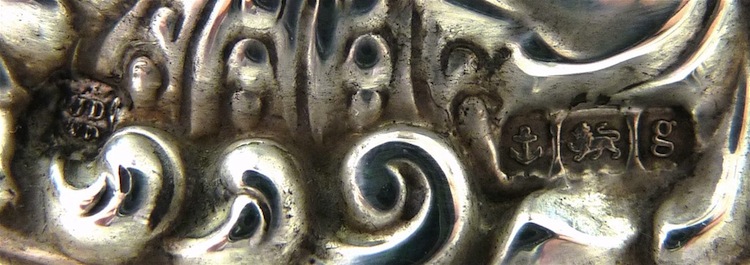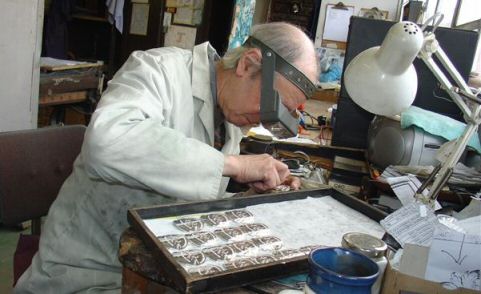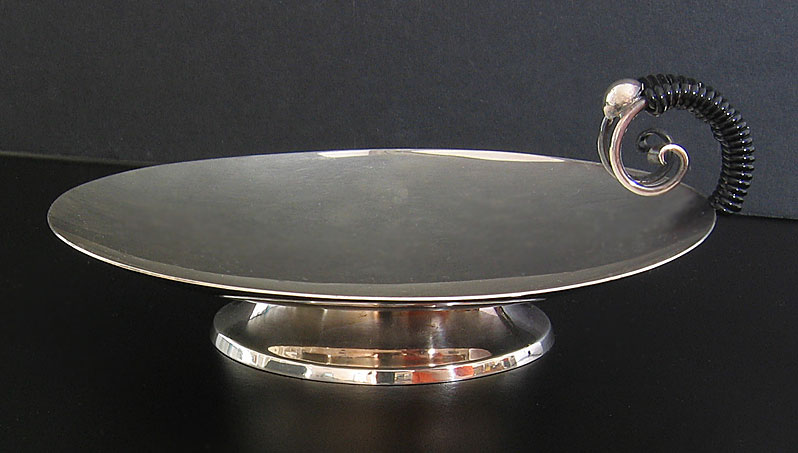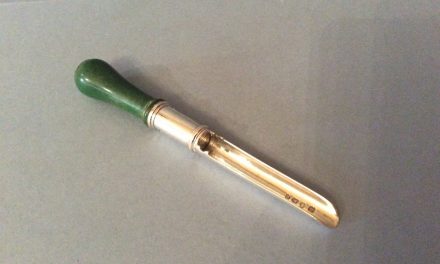Seolfor in old Anglo Saxon. The metal with the highest thermal and electrical conductivity of all, not to mention being the most reflective of metals, silver is a special material in many different ways.
Our word for silver comes from the Germanic roots of many older English words. The name silver is thought to be based upon the colour of the river Lycia, in modern day Turkey.
A clue to just how long man’s relationship with silver stretches back in time is the similarity of the noun in so many different ancient Indo/European language groups, where the word ‘Arg’, means ‘White or To Shine’.
- Greek = Argos
- Latin = Argentum
- Celtic = Argent
- Sanskrit = Arjuna
Although no-one is quite sure when silver was first recognized and made, Archaeologists have found the remains of silver smelting operations dating earlier that 4000 BC. In fact until 1400 A.D., there were only seven metals known to man. These metals are known collectively as the ‘Seven Metals Of Antiquity’: Gold, Silver, Copper, Iron, Tin, Lead and Mercury (Mercury was thought to be a type of Silver, its Greek name: ‘Hydrargyrum’, meaning Watery Silver, later evolved into the English ‘Quick Silver’).
Unlike gold, copper (and occasionally meteoritic iron) which ancient man found as natural nuggets virtually ready to use, in nature silver very rarely occurs in its pure metallic state. Silver had to be discovered and extracted from ores and this probably happened when heating copper deposits. Even today, most silver is a produced as a fractional by product of smelting of other metals such as lead – where for each ton of lead, a few ounces of silver are generated. So why go to so much trouble for a metal that whilst attractive, is only slightly harder than gold?
Properties of Silver
Attractive though it is, why did our ancestors put so much effort into obtaining silver? Although it was an impractical metal for weapons and tools and neither as rare or as workable as gold, at various stages in history silver has been counted as considerably more precious of the two metals. Demand for silver has always been very high.
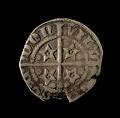 Bronze (an alloy of Copper and Tin) was harder wearing and easier to make. The Greeks ploughed with bronze plough shears and stormed Troy with bronze swords. Bronze ingots were traded over thousands of miles. Like us they had a form of bronze/copper coinage as the basis of currency. And just like us, ancient Greek children made the once only error of putting copper coins into their mouth. Yeuch! Small wonder that silver cups, silver plates and silver spoons were such sought after status symbols. Gold was too soft, too heavy and simply too rare. Wood and horn? Well, a bit barbarian if you had aspirations as a civilisation. But for over 6,000 years silver was the wonder metal of mankind for domestic and jewellery use (even 9ct gold contains more silver than actual gold). Silver was the stainless steel of its age.
Bronze (an alloy of Copper and Tin) was harder wearing and easier to make. The Greeks ploughed with bronze plough shears and stormed Troy with bronze swords. Bronze ingots were traded over thousands of miles. Like us they had a form of bronze/copper coinage as the basis of currency. And just like us, ancient Greek children made the once only error of putting copper coins into their mouth. Yeuch! Small wonder that silver cups, silver plates and silver spoons were such sought after status symbols. Gold was too soft, too heavy and simply too rare. Wood and horn? Well, a bit barbarian if you had aspirations as a civilisation. But for over 6,000 years silver was the wonder metal of mankind for domestic and jewellery use (even 9ct gold contains more silver than actual gold). Silver was the stainless steel of its age.
- Silver is malleable and ductile. It is one of the few metals which can be beaten into delicate thin sheets of leaf or pulled to make a strong wire. Hence its appeal to makers of jewellery.
- It is the whitest and most reflective of metals. Without silver, mirrors (that most human of objects) would not have existed as we know them until quite recently.
- Silver has long been used in medicine for its natural bactericidal properties. Another useful property in jewellery.
- The % of silver which isn’t silver is normally copper or nickel. Some new alloys of silver contain trace amounts of Germanium which (almost) stop the silver from tarnishing.
Sterling 925
Inevitably, such a valuable commodity as silver needs protection and oversight.
The testing and marking of items made of precious metal is far from a new idea and stretches back to the earliest recorded histories. Remember Archimedes? The business with the bath was about him inventing a method of testing the purity of gold by objects by their weight to volume ratio.
In 1300, King Edward I enacted a statute ordering that all silver articles must meet the Sterling silver standard (92.5% pure silver), and should be assayed (from the French ‘to try’) by ‘guardians of the craft’, who would then mark the item with a leopard’s head stamp.
There is some debate as to where the term ‘sterling’ standard comes from, but it is thought that it is derived from the common name for the English silver penny of the time, called a Starling for its shine. Starling silver was therefore coin quality silver, that is 925 parts per thousand.
Why starling? Nothing to do with the slightly shimmery bird of the same name I’m afraid, starling is middle English for ‘Little Star’. If you remember those history lessons about 1066 and the pictures of the Bayeux tapestry, you may recall that Halley’s Comet appeared in the sky just before the battle. This was taken as a good omen and after William seized the throne of England, stars became a symbol stamped on the silver currency he produced.
In 1327, King Edward II granted a charter to the Worshipful Company of Goldsmiths (more commonly known as the Goldsmiths’ Company), marking the beginning of the Company’s formal existence. This company was headquartered at London’s Goldsmiths’ Hall of the Worshipful Company of Goldsmiths, from whence the English term “hallmark” is derived.
Nearly 700 years later, Braybrook & Britten still take our silverware to the same place to be tested (assayed) and marked. Including our own makers mark approved and registered at Goldsmith’s.
Although some other countries allow finesses of silver lower than 925, all silver objects in our collection are of the 925 Sterling standard, or the slightly higher 958 Britannia standard. In fact we go even further than this as we still, where possible, use the full set of traditional London or Edinburgh hallmarks on our silver.

